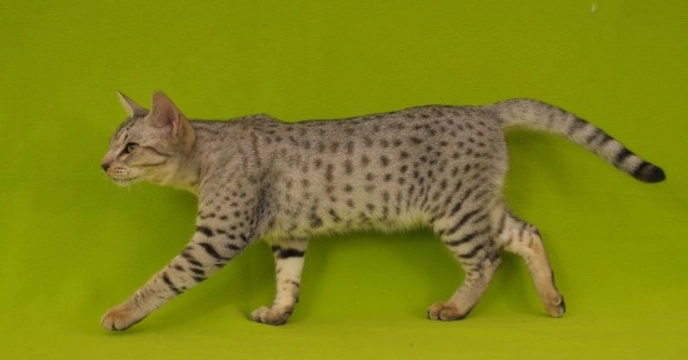
Is the Ocicat the right cat for you?
The Ocicat is an incredibly distinctive domestic cat breed whose appearance roughly resembles that of the wild Ocelot cat, hence the name. They are also commonly confused with the Bengal cat by the uninitiated, thanks to their beautiful and very distinctive coats! However, the Ocicat is not part of the Bengal cat gene pool, and unlike the Bengal, they do not have any wild ancestry to attribute their interesting coat colouration to; the Ocicat is totally domestic.
If you love the Ocicat appearance or are wondering whether they might be a good choice of cat for you and want to find out more, in this article we will look at the Ocicat’s background and some of their core traits, in order to help you decide. Read on to learn more.
Where does the Ocicat come from?
The Ocicat is a relatively modern breed, with the first cats that produced today’s breed lines not becoming established until the 1960’s. They were initially produced due to attempts to produce a Siamese cat with the colour points of the Abyssinian, but within the second generation litter, a spotted kitten was naturally although unexpectedly produced. While this first kitten was neutered, later breeding from the same parent cats resulted in further spotted kittens, and these were used for the first breeding programme to deliberately produce more spotted cats, in the breed that we today know as the Ocicat.
Later breeding efforts to produce the same spotted coat from different parents were achieved by crossing an Abyssinian cat with a Siamese cat, and then breeding the subsequent offspring back to a Siamese.
By the 1980’s, the breed was well established and recognised by all of the world’s major cat breed registries, and the breed has now spread and become popular all across the world.
What does the Ocicat look like?
The Ocicat’s coat colour and pattern is the main defining trait of the breed, and achieving a strong spotted colour and eye-catching appearance is the main goal of modern breeding programmes.
There are twelve permissible colours for the coat, all of which have silver contrasting with the spots:
- Tawny
- Chocolate
- Cinnamon
- Blue
- Lavender
- Fawn
- Black silver
- Chocolate silver
- Cinnamon silver
- Blue silver
- Lavender silver
- Fawn silver
The build of the Ocicat is large and muscular, with a well-defined appearance, almond shaped eyes, and a wedge-shaped head common to most oriental breeds. They should have strong, distinctive facial features, and strongly contrasting spots on the background.
What are their personalities like?
The Ocicat shares a lot of their personality traits with the Siamese cat, being incredibly loving with people and needing plenty of entertainment and love. They will not thrive if left alone for long periods of time, and they very much enjoy being involved in family life. They are not usually shy, and will normally be keen to meet visitors if this means that they might get some attention! They are also sociable with other cats, and like to have company.
They are lively, active cats that love to play, and have some things in common with dogs in that respect! They love to chase toys and enjoy puzzle games, and if permitted to, will often become adept hunters.
Like the Siamese cat that forms part of their ancestry, the Ocicat tends to be chatty and vocal, with a wide range of meows and other sounds at their disposal! They will “talk” back to you and let you know if they want your attention, but they are not quite as noisy as the average Siamese cat!
Any health issues?
As a pedigree breed, the Ocicat has slightly elevated risk factors for some genetically inherited health conditions that the breed line and the parent ancestors may be prone to. However, as a hybrid breed in its own right, they are considered to be a relatively healthy pedigree breed, and are generally healthy and relatively long lived.
Conditions that can affect the Abyssinian and Siamese breeds tend to occur within the Ocicat breed too within certain breed lines, including progressive retinal atrophy, heart disease, and renal or liver problems.
Mapping out the health and longevity of the parent breeds, and genetic testing for known problems prior to breeding can help to minimise the chances of problems occurring in later generations.
Is the Ocicat the right pet for you?
If you have never owned an oriental cat before, you are likely to find the Ocicat rather different from your average moggy, and they are more demanding of your time and more likely to make a fuss if they are unhappy! However, they are big-hearted, incredibly loving cats that soon bond with their families, and once you have the love of an Ocicat, they will be your friend for life.
If there is someone home for much of the time and you are keen to own a very interactive cat that likes to be with you, the Ocicat may be the right choice of cat for you. If you are out most of the time and want a very independent, self-reliant cat, they may not be a good pick.



